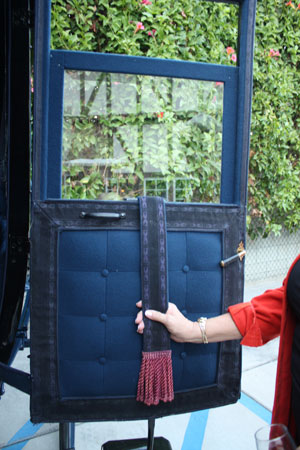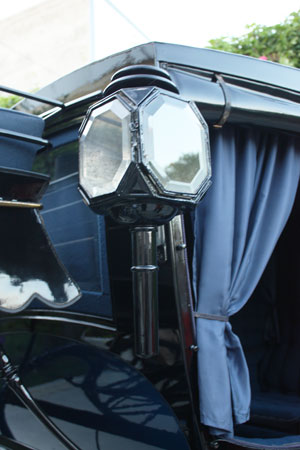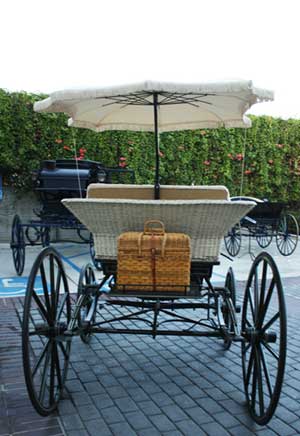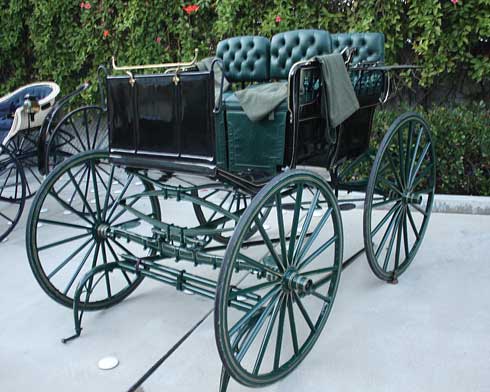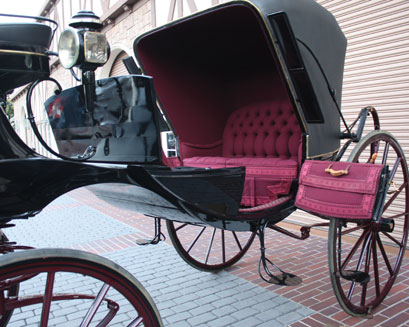Carriageous Nadine Tilley
By Paula Parisi February 18, 2012
Nadine Tilley, proprietress of the Tilley Carriage House, a private museum in Hollywood. (Photo by Paula Parisi)
Nadine Tilley is driven. As at home driving a four-in-hand as in the saddle, Tilley’s love of equines prompted her to create a personal museum of horse-drawn conveyances.
Tilley traces her aesthetic obsession to the ’80s and a show in Santa Barbara. “It was a Saddlebred show, and I wasn’t into Saddlebreds at all, but my friend bred them, and her mother, who was about 70, came into the arena in an antique carriage with a matched pair of Saddlebred horses. There was a live symphony orchestra playing behind them, and it was just breathtaking. And I said, ‘Oh my goodness. That is something. That’s a vision. It’s living art and I would like to learn how to do that, [because] I didn’t know how to drive or do anything at the time.”
Her interest was also piqued by a practical consideration. “I said, ‘That’s great! If she can do it at her age, that’s something I should look into so I can stay involved with horses when I’m old.”
She proceeded to investigate, “one carriage at a time.” Now, tucked away at a very comfortable remove from the curb on Gower Street in Hollywood, the Tilley Carriage House contains 18 carriages dating from 1850 to 1905, “and one sleigh,” Tilley says, referring to a sleek Albany Cutter on the second floor that is one of the few items that doesn’t get hauled out for the occasional spin. “We don’t get much snow in California,” she smiles, sharing that she will sometimes attach the silver sleigh bells to a carriage during holiday season. There are hundreds of accessories―things like harnesses, tracings, whips and tack―and walls of books and cases full of ribbons, artifacts and memorabilia.
Literally anywhere the eye lands there is one curious item or another. She has been collecting since 1986, and runs the Carriage House like an extension of her living room rather than a display venue. Although the museum is private, Tilley opens it to friends and industry associates. The California Andalusian Horse Alliance 2011 Year End High Point Dinner and the Whip’R Snapper Annual Membership and Holiday Party were two events recently held there.
When Tilley refers to the museum as her “private collection,” she qualifies it by saying, “private as in it’s a collection of things you’d find in a personal household. I have no commercial vehicles. A lot of people ask, ‘Why don’t you have a stagecoach?’ I like that they were a part of everyday lives. These are things people would say, ‘Bring us the basket phaeton, we’re going to town this afternoon.’”
Tilley Andalusians, a breeding farm in Hemet, is home to about 40 horses, some of which Tilley uses to pull her coaches. “They’re all used,” she says of the vehicles, and by that she does not mean “previously owned,” though they are that too. They have all been meticulously restored―the lacquer, brass, and in some cases, crystal, sparkling.
“They’re real vehicles and I compete in them. There are a lot of competitions around, pleasure driving days, where you take antique vehicles to the fair.” The Ventura and L.A. County Fairs are two in which she has participated. “There are a lot of different divisions.”
But whatever you do, don’t call them buggies. “A buggy was very utilitarian. They were square-boxed and affordable. They were the Volkswagens of their day.”

The Curtain Coach, circa 1850, once owned by John D. Rockefeller, is trimmed in velvet and the leaded-glass windows are lavishly beveled. (Photo by Paula Parisi)
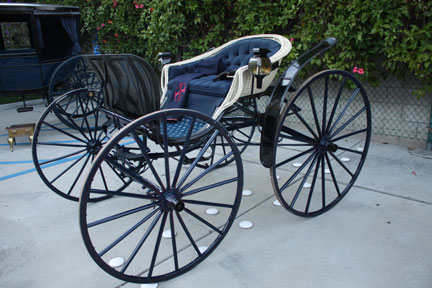
The Basket Shell Phaeton. circa 1860, is a sporty conveyance that can be driven with a small horse, matched pair or pony.
(Photo by Paula Parisi)
Short URL: https://theequestriannews.com/?p=8018



